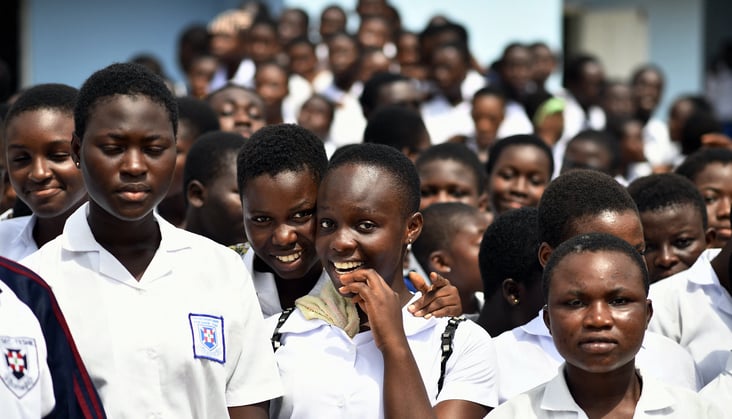By Chinasaokwu Helen Okoro
Ghana’s free senior high school policy needs robust revision and sustainable funding, argues an advisor to Ghana’s President-elect John Mahama.
In 2017, Ghana took a bold step by introducing its Free Senior High School (SHS) policy, a reform intended to transform the educational landscape and make secondary education accessible to all.
The policy’s goals were clear and laudable: alleviate financial burdens on families, open the doors of learning to those previously excluded, and ultimately close the longstanding gap between rural and urban schooling. Yet, nearly seven years on, the scheme’s promise remains only partially fulfilled. While it has certainly broadened access, there are pressing questions about its quality, long-term funding, and the deep-rooted inequalities it was supposed to address.
The seeds of Ghana’s uneven educational development were planted in the colonial era. Under British rule, education was designed to serve imperial ends, cultivating a small urban-based elite while neglecting vast rural areas. Even after independence, these inequalities have proved stubborn. Urban schools, historically equipped with better resources, infrastructure, and trained teachers, continued to flourish. Rural schools, meanwhile, often struggle with shortages of classrooms and basic materials.
The Free SHS initiative was initially welcomed as a remedy to these injustices. In practice, however, it has not fully delivered. It has swelled enrolment, yes — but often without the necessary expansion in classrooms or teaching staff. Consequently, rural schools face overcrowded classrooms, stretched resources, and a decline in teaching quality, just as they try to serve more students than ever before.
Quality matters at least as much as access. Education should be transformative: it should empower young minds with critical thinking skills, technical competencies, and the capacity to innovate. Yet simply allowing more students into the system does not guarantee these outcomes. Overcrowded classrooms, teacher shortages, and a lack of proper materials threaten to undermine the quality that Free SHS was meant to safeguard. Data shows that secondary enrolment shot up from about 813,000 in 2017 to over 1.2 million by 2023. That surge puts huge pressure on infrastructure. While some top urban schools struggle to absorb new arrivals
many rural ones, which were already behind, now contend with class sizes that strain any serious attempt at student-centred learning.
Aligning Ghana’s tax structure
Beyond the challenge of quality, funding remains a core concern. The government’s heavy reliance on the Annual Budget Funding Amount (ABFA), derived primarily from oil revenues, poses serious sustainability issues. Oil prices are notoriously volatile; basing a flagship social programme on such an uncertain income stream is risky. Indeed, the government’s difficulty in borrowing from international capital markets in recent years only highlights how fragile these financial foundations are. One way forward would be to shift towards more stable and predictable funding mechanisms. A modest rise in Value Added Tax (VAT), for instance, could offer a dependable revenue source to secure Free SHS for the long haul. By aligning Ghana’s tax structure more closely with international norms — where average VAT rates often surpass Ghana’s current levels — the government could ensure that education financing does not hinge so perilously on global commodity prices.
Critics might balk at higher taxes, yet a slight VAT increase earmarked for education could be designed to be broad-based, reducing the burden on any single segment of society. Unlike the E-Levy or other less stable taxes, VAT applies widely and can capture economic activity across both formal and informal sectors. Such a move would not only generate a steady stream of revenue but also spread the cost of education more equitably. Over time, the government could integrate this approach into a transparent, long-term plan, giving parents, schools, and communities a clear sense of how Free SHS will be funded and improved.
Beyond access and funding
Still, financing alone will not solve all the challenges. Ghana must look beyond access and funding to focus on educational quality. Countries like Finland and South Korea have shown that world-class results come from consistent investment in teacher training, strong curricular frameworks, and adequate facilities. Ghana should learn from these examples. Free SHS should go hand-in-hand with efforts to strengthen teacher recruitment, enhance infrastructure, invest in science, technology, engineering, and maths (STEM), and bolster vocational and technical paths that align with future labour market demands.
A thorough revision of the Free SHS policy is now imperative. This does not mean scrapping the programme — on the contrary, its vision of equitable, universal education is more urgent than ever. But it does mean confronting legacy issues that keep rural students behind, finding sustainable funding mechanisms, and rethinking how to maintain quality in a rapidly expanding system. The current moment offers a chance to reset, to ensure that Free SHS not only survives but thrives. By doing so, Ghana can move closer to the day when every child, whether in Accra or a remote northern village, not only sits in a secondary classroom but receives the high-quality education they deserve. The time to act is now.


